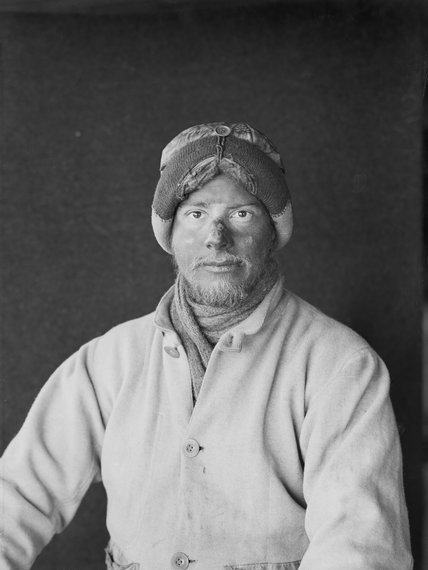Apsley Cherry-Garrard (1886–1959)
 Apsley Cherry-Garrard was a member of Robert Falcon Scott’s Terra Nova expedition (1910–13). His account of the expedition, The Worst Journey in the World, is a classic and has been acclaimed as the greatest true adventure story ever written.
Apsley Cherry-Garrard was a member of Robert Falcon Scott’s Terra Nova expedition (1910–13). His account of the expedition, The Worst Journey in the World, is a classic and has been acclaimed as the greatest true adventure story ever written.
‘Cherry’ was born a privileged member of the English upper-class. He attended Oxford University, where he read Classics and Modern History and he inherited a vast estate from his father at age 21. Like many young men of the Edwardian era, he longed for adventure.
In 1908, Cherry met Dr. Edward Wilson at a shooting lodge in Scotland. Wilson had been to the Antarctic with Scott in 1901-04 and talked of their plans for a new expedition. Cherry was enthralled. The expedition held the same aura of romance and heroism that he identified with his recently deceased father, who had fought with merit in India and China. He decided to volunteer.
At the age of 24, Cherry was one of the youngest members of the expedition. His application was initially rejected as Scott was looking for scientists, but he applied again, promising £1,000 (2009 approximation £50,000) towards the cost of the expedition. Rejected a second time, he made the donation regardless. Struck by this gesture, and at the same time persuaded by Wilson, Scott agreed to take Cherry as assistant biologist.
The expedition arrived in Antarctica on January 4, 1911. During the remainder of the southern summer, Cherry helped lay depots of fuel and food on the intended route of the party which would attempt to reach the South Pole.
In July 1911, Cherry accompanied Wilson and Lieutenant Henry ‘Birdie’ Bowers on a winter journey to an emperor penguin rookery at Cape Crozier. Wilson’s personal goal in Antarctica was to collect emperor penguin eggs for scientific study. Darwin’s theory of evolution had been published in 1859, and the hypothesis was that the embryos in the eggs might shed light on the evolutionary link between reptiles and birds. Their plan was to set up camp near the colony and make several collecting trips over a period of days before returning home.
In almost total darkness, and with temperatures ranging from -40 °F (-40 °C) to -77.5 °F (-60.8 °C), they man-hauled their sledge 60 miles (97 km) from their base at Cape Evans, to the far side of Ross Island. Frozen and exhausted, they reached their goal only to be pinned down by a blizzard. Their tent was carried off by the wind, leaving the men in their sleeping bags under a thickening drift of snow. By great fortune, they found their tent when the winds subsided. They returned to Cape Evans exhausted, having successfully collected three eggs. Cherry later referred to this as the ‘worst journey in the world’ at the suggestion of his neighbour George Bernard Shaw, and gave this title to his book recounting the fate of the 1910–13 expedition.
In November 1911, Cherry accompanied the South Pole team as far as the top of the Beardmore Glacier, where his supporting party was sent back. Scott continued on to the Pole, leaving orders to meet him on March 1 at latitude 82° or 82° 30′, to assist his return journey. In late February, Cherry, along with dog handler Dimitri Gerov, set off for ‘One Ton Depot’ (latitude 80), arriving on March 3. They waited there for seven days hoping to meet the South Pole team, then deposited food and turned back on March 10. Nine days later Scott and his companions reached a point 11 miles (18 km) south of One Ton Depot, where they eventually froze to death. It was not until the following spring that a team was able to ascertain the fate of the South Pole team. On November 12, 1912, the bodies of Scott, Wilson and Bowers were found in their tent.
Cherry was deeply affected by the deaths, particularly those of Wilson and Bowers, with whom he had made the journey to Cape Crozier. He suffered from depression and what is now called post-traumatic stress disorder (PTSD) for the rest of his life. He continually revisited the question of what alternative choices and actions might have saved the South Pole team — most notably in his 1922 book, The Worst Journey in the World. His book reflects on the themes of self-sacrifice and heroism and asks – but does not answer – the question of whether their suffering was futile, or whether it would inspire future human beings facing very different challenges.





